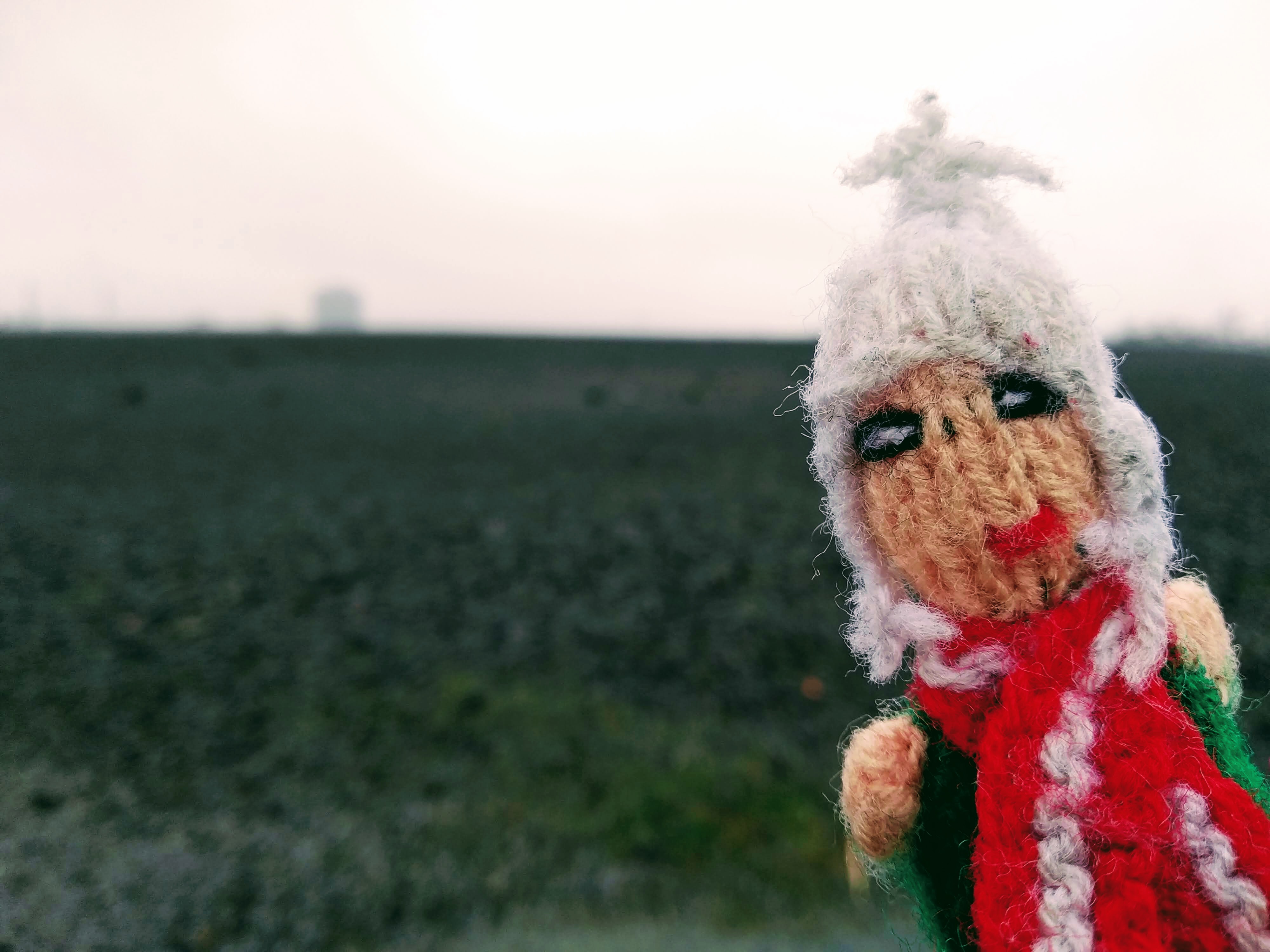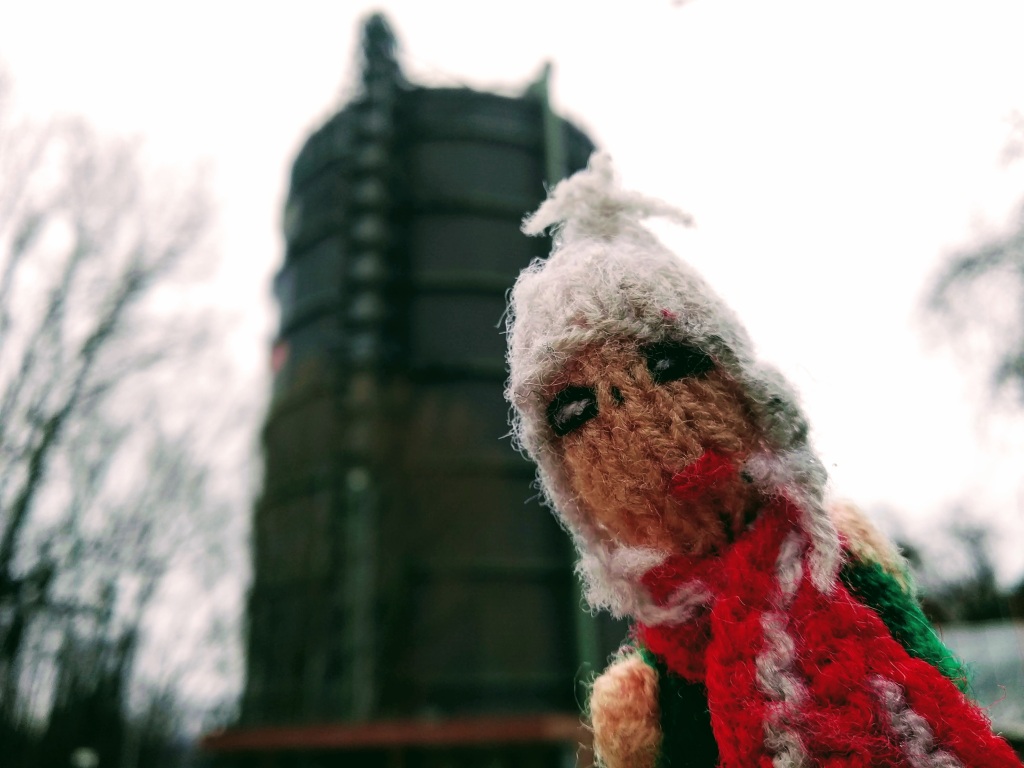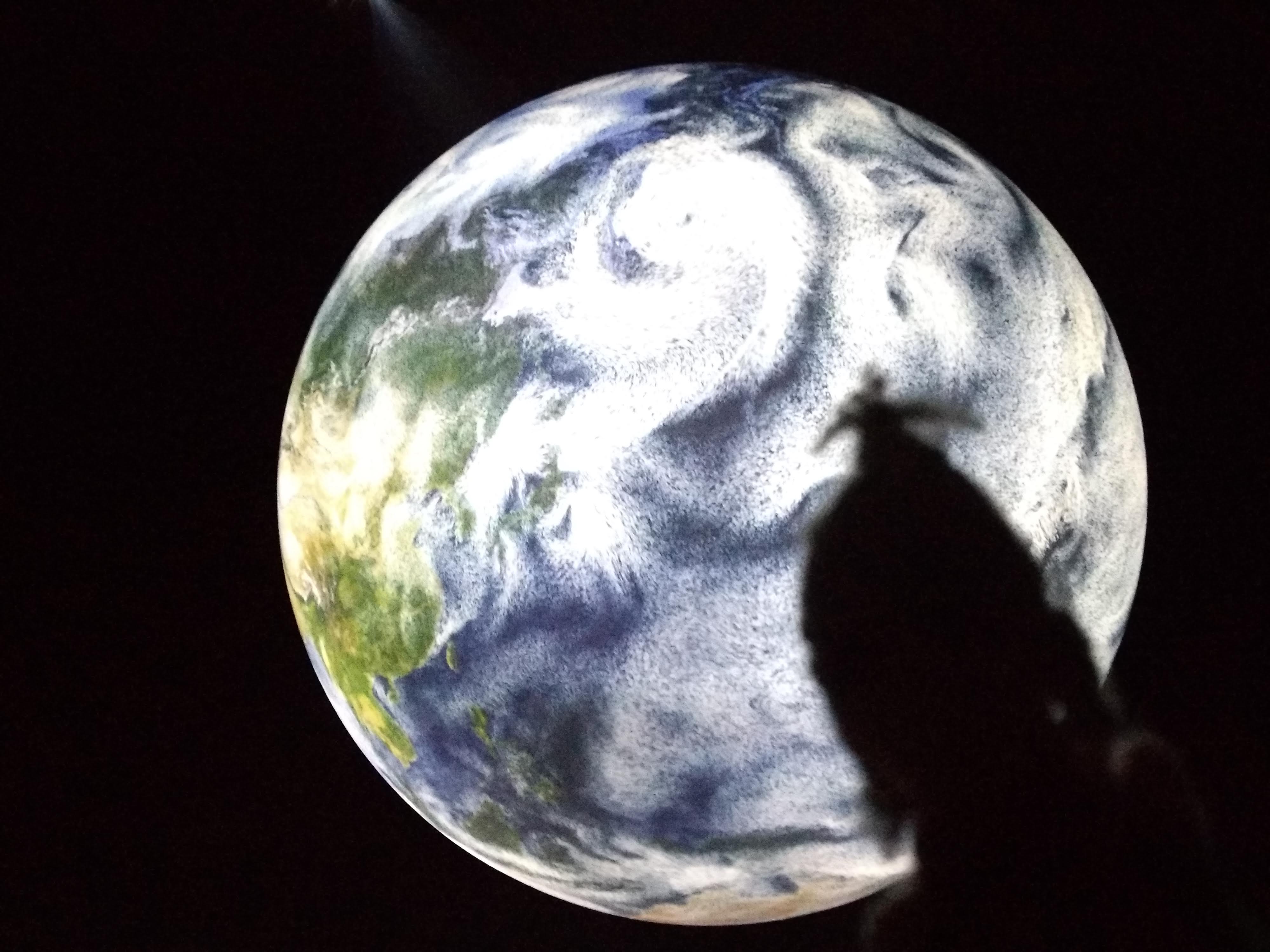Two months, day four: Slags
Regretting gloves.

Essen's landscape owes a lot to the coal-mining industry as well as the industrial production of steel.
The mining of coal started in the area during the 15th century and continued until the end of 1986, making some people very rich and a lot of people very dirty. Essen therefore has artificial mounts around it, and it was decided that we would start today's exploration with a visit to Tetraeder-Halde, a seventy-three-metre slag heap called Halde with some art on top of it, called the Tetraeder.
The art is a "mighty, almost 60 meter high tetrahedron" with stairs which promise, on a clear sunny day, to lead you to a platform which provides spectacular views of the region.

Today was neither clear nor sunny.
Nonetheless, Hostess and I valianty fought our ways up the barren expanses of slag to reach the summit, where a lunar-like surface welcomes the weary traveller with a view which can quite confidently be described as unlike any other.
Undeterred, we climbed the pyramid structure to see whether we'd be able to see any more through the clouds and snow which, unsurprisingly, we couldn't. Determined to save time, we somehow ended up in some sort of slag-mountaineering situation where we took the quick route rather than follow the track that wound its way up to the summit.
Hostess made it apparent her boots were not made for walking; I determined my choice of gloves to be inadequate.
Our second port of call was the Gasometer in Oberhausen, a former gas holder built between 1927 and 1929 which stored excess gas that was not being used by the production of coke and steel, thereby saving it from being flared off when supply exceeded demand. With the end of production of coal and steel in the eighties, the site found itself surplus to requirements and it was decommissioned in 1988. In 1992, rather than demolish the Gasometer, the owner paid its saved demolition fees to the council which acquired the site with the intention of turning it into a magnificent multi-level exhibition space.

The current exhibition is The Fragile Paradise, which – according to the web site – "takes visitors on a visually stunning journey through the turbulent climate history of our earth and shows in impressive, award-winning photographs and videos how the flora and fauna changed during the Anthropocene."
The wildlife photography on the ground floor is breathtaking, if not somewhat lacking in Peruvian finger puppets, and the contrasting photographs of environment devastation on the first floor equally impactful.
The highest floor (on top of the disc which originally kept the gas in) had a massive suspended globe onto which were projected various images of things like temperatures, flights and storms. We grabbed a massive bean bag each and watched that right through the to the end, declared the day a success and then made our way home with the heating on full blast to think about food.
